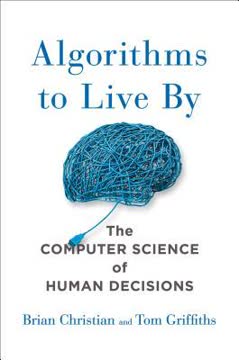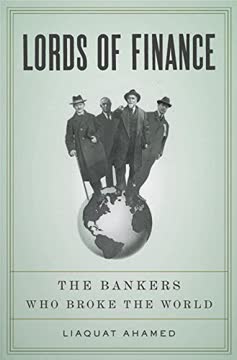Key Takeaways
1. The 2008 financial crisis stemmed from systemic vulnerabilities and regulatory failures
Finance, at least as it's organized in modern economies, is inherently fragile.
Underlying vulnerabilities. The U.S. financial system had become increasingly fragile in the years leading up to the crisis:
- Rising household debt levels
- Migration of credit risk outside the regulated banking system
- Increased reliance on short-term funding by financial institutions
- Proliferation of complex mortgage-backed securities
Regulatory shortcomings. The fragmented regulatory system failed to keep pace with financial innovations and address emerging risks:
- No single agency responsible for monitoring systemic risk
- Inadequate oversight of nonbank financial institutions
- Insufficient capital requirements for banks
- Lack of authority to resolve failing nonbank firms
These vulnerabilities and regulatory gaps set the stage for a crisis that would threaten the entire financial system and broader economy.
2. Early crisis responses were limited by inadequate tools and authority
We had stretched our authority to its limits, but the limits were real, and it was now painfully clear that we couldn't put out the fire until we could deploy the full resources of the U.S. government.
Limited initial tools. When the crisis first erupted, policymakers had few options to address the growing turmoil:
- Federal Reserve's discount window lending to banks
- FDIC's authority to resolve failing depository institutions
- No power to inject capital, guarantee liabilities, or purchase assets
Gradual escalation. As the crisis intensified, the Federal Reserve and Treasury Department had to stretch their existing authorities:
- Creation of novel lending facilities (e.g., Term Auction Facility, Primary Dealer Credit Facility)
- Facilitation of JPMorgan's acquisition of Bear Stearns
- Government conservatorship of Fannie Mae and Freddie Mac
These initial responses helped contain some fires but proved insufficient to quell the growing panic in financial markets.
3. Lehman's collapse marked a turning point, exposing the fragility of the financial system
Lehman exemplified the factors from which the crisis stemmed. It was a loosely regulated, heavily overleveraged, deeply interconnected nonbank, with too much exposure to the real estate market and too much dangerously runnable short-term financing.
Lehman's vulnerabilities. Lehman Brothers embodied many of the systemic weaknesses that led to the crisis:
- High leverage and reliance on short-term funding
- Significant exposure to troubled real estate assets
- Limited regulatory oversight as a nonbank institution
Cascading effects. Lehman's bankruptcy on September 15, 2008, triggered widespread panic:
- Freezing of credit markets
- Collapse of the Reserve Primary money market fund
- Intensified runs on other financial institutions
- Sharp declines in asset prices across markets
The Lehman failure demonstrated the interconnectedness of the financial system and the potential for contagion, forcing policymakers to take more drastic action.
4. TARP and other emergency measures were crucial but politically contentious
We understood why the public wanted to see financial firms pay the ultimate price for their recklessness. As the saying goes, capitalism without bankruptcy is like Christianity without hell. But policymakers who focus on retribution rather than stabilization during an epic crisis will only make the crisis more epic.
Comprehensive response. The Troubled Assets Relief Program (TARP) and related measures marked a turning point in crisis management:
- $700 billion in funding authorized by Congress
- Capital injections into banks and other financial institutions
- Expanded guarantees for money market funds and bank debt
- Programs to restart securitization markets and support auto companies
Political backlash. These interventions, while necessary, sparked intense public anger:
- Perception of "bailouts" for Wall Street at taxpayer expense
- Concerns about moral hazard and rewarding risky behavior
- Criticism from both liberal and conservative politicians
Despite the controversy, TARP and other emergency measures successfully stabilized the financial system and limited economic damage, ultimately turning a profit for taxpayers.
5. Coordinated global action was necessary to stabilize markets and economies
Even though the crisis started in the United States, its impact reverberated around the world—and the response required U.S. policymakers to work closely with their global counterparts.
International cooperation. The global nature of the crisis demanded coordinated action:
- Establishment of central bank currency swap lines to address dollar shortages
- Synchronized interest rate cuts by major central banks
- Expansion of IMF lending to support emerging market economies
Policy alignment. Key areas of international coordination included:
- Capital and liquidity standards for banks (Basel III)
- Reforms to over-the-counter derivatives markets
- Enhanced oversight of systemically important financial institutions
This unprecedented level of global cooperation helped prevent a broader collapse of the international financial system and supported economic recovery efforts.
6. Post-crisis reforms strengthened the financial system but left gaps in crisis-fighting tools
Unfortunately, financial crises will never be entirely preventable, because they are products of human emotions and perceptions, as well as the inevitable lapses of human regulators and policymakers.
Strengthened safeguards. The Dodd-Frank Act and related reforms addressed many pre-crisis vulnerabilities:
- Higher capital and liquidity requirements for banks
- Enhanced supervision of systemically important institutions
- Creation of the Financial Stability Oversight Council
- Improved resolution authority for failing firms
Remaining weaknesses. However, some key emergency powers were curtailed:
- Restrictions on the Federal Reserve's lending authority
- Elimination of the FDIC's ability to provide broad guarantees
- No standing authority to inject capital into struggling firms
While the financial system is more resilient, these limitations on crisis-fighting tools could hamper future responses to severe market turbulence.
7. Future crises are inevitable; policymakers must be prepared with robust emergency powers
The stakes are high enough that Washington ought to treat financial stability as an emergency before it becomes one.
Inevitable challenges. Despite improved regulations, financial crises will continue to occur due to:
- Human nature and behavioral biases in markets
- Financial innovation and the migration of risk to new areas
- Unforeseen economic shocks and geopolitical events
Preparedness imperative. To mitigate future crises, policymakers should:
- Maintain strong regulatory oversight and adapt to evolving risks
- Preserve and expand emergency authorities for rapid crisis response
- Ensure adequate fiscal and monetary policy space for economic support
- Foster international cooperation and crisis management frameworks
By acknowledging the inevitability of financial instability and preparing robust crisis-fighting tools, policymakers can better protect the economy and financial system from future shocks.
Last updated:
Review Summary
Firefighting receives mixed reviews, with praise for its insider perspective on the 2008 financial crisis and criticism for its lack of new insights. Readers appreciate the authors' explanations of complex financial concepts and their decision-making process during the crisis. Some find the book self-serving and lacking in critical analysis of the authors' actions. Overall, it's considered a valuable read for those seeking to understand the crisis, though perhaps too technical for casual readers and too basic for experts.
Similar Books










Download PDF
Download EPUB
.epub digital book format is ideal for reading ebooks on phones, tablets, and e-readers.







